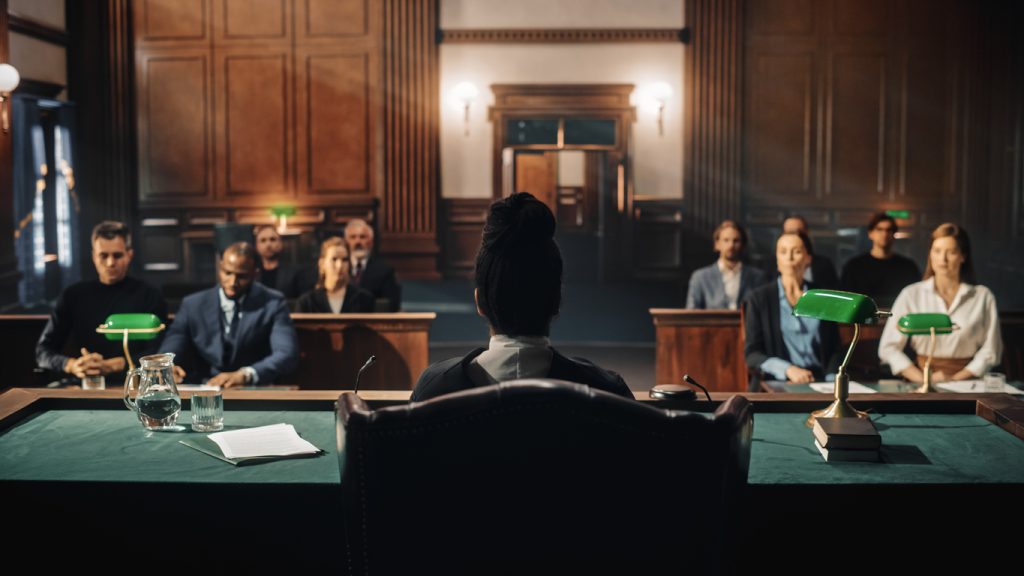The United States, with one of the highest lawyers per capita in the world, is known for a culture of litigiousness. In this article, we use the US as a backdrop to discuss the ways in which reckless litigation can backfire, and ask whether the balance of risk can ever truly be said to favour the defendant over the plaintiff.
Risks For Plaintiffs
There are a number of ways in which an organisation that aggressively pursues litigation can ultimately damage its own interests.
The first and most obvious form this fallout may take is harm to the plaintiff’s reputation. This is a risk for any organisation whose business model relies on a friendly image, as legal action that they take (particularly against smaller entities) may be represented by media as excessively heavy-handed. One recent high-profile case has come from video game giant Nintendo, whose suit against console ‘hacker’ Gary Bowser led to a 40-month prison sentence and $14.5 million in damages being awarded to the company. This has led to widespread condemnation among the press and Nintendo’s customer base as it emerged that Bowser would be paying damages in installments worth 25-30% of his monthly salary, likely for the rest of his life.
For a prime example of similar reputational damage occurring to an individual, we need only look at 1994’s Liebeck vs McDonald’s Restaurants, which became widely known as the McDonald’s coffee-spilling case. When plaintiff Stella Liebeck was badly burned by a cup of McDonald’s coffee that spilled in her lap, eventually culminating in her being awarded $160,000 in compensatory damages and $2.7 million in punitive damages, the case became a byword for willful victimhood and a poster child of the American culture of litigiousness.
In reality, the details of the case do not support this perception of events, but the opposite. The 81-year-old Liebeck’s third-degree burn wounds were far more severe than might have been expected from a typical coffee spill, and the apparently excessive punitive damages awarded were only greater than the $20,000 Liebeck had initially sought to cover her medical expenses because McDonald’s had refused to settle (and were ultimately reduced to $480,000 by the trial judge in any case). Yet the popular perception of the lawsuit as an example of get-rich-quick opportunism on the victim’s part has never disappeared, and McDonald’s own reputation has certainly not fared the worse for it.
Beyond the reputational damage they stand to receive, plaintiffs whose actions appear overly litigious may also incur concrete financial penalties. Rule 11 of the Federal Rules of Civil Procedures enables a fair amount of leeway for likely frivolous cases to be aired in court. However, should a court deem a suit groundless or “presented for any improper purpose”, heavy sanctions may be levied against the party at fault.
Beyond the reputational damage they stand to receive, plaintiffs whose actions appear overly litigious may also incur concrete financial penalties.
There are several prominent examples of such a strategy proving costly. In March 2022, for example, former president Donald Trump sued Hillary Clinton for $24 million in damages, claiming that she had unfairly framed him as a willing recipient of Russian assistance during the 2016 presidential race. As observers noted at the time, the suit was filed five years after Trump won the election upon which it was based, and three years after special counsel Robert Mueller concluded that Trump had been “receptive” to Russian aid during that time.
As a consequence, in January 2023 a federal judge found the lawsuit to be frivolous, remarking in the judgment that its “inadequacy as a legal claim was evident from the start” and that a reasonable lawyer would not have filed it. Trump and his legal counsel were ordered to pay $66,000 in court penalties and legal fees as well as $937,989.39 in sanctions, an amount noted by the judge to be substantial. Legal experts have also suggested that Trump’s more recent $500 million lawsuit against longtime lawyer Michael Cohen is likely to end in a similar fashion.
Risks For Defendants
Both reputational and monetary damages can clearly be a deterrent to reckless litigation. But on balance, is the risk the same for both parties involved?
At the end of the day, as much as an ill-received lawsuit can harm a company, the cost of being the target of legal action is generally far higher than it is to pursue it. This is borne out in every metric for how litigants may be adversely affected by a lawsuit, whether material or immaterial.
In general, larger organisations – the kind that are most likely to resort to litigation in the first place – are generally much better-placed to do so, having the resources and connections necessary to retain effective attorneys. For smaller organisations, whose best hope for success in a lawsuit is to avoid becoming involved in it, the fees accrued from defending themselves against legal action pose much more of a financial threat. This is obviously exacerbated if the lawsuit is unforeseen, while the plaintiff has the benefit of advance preparation.
Even reputational harm is often less of an issue for the litigating party, as many examples demonstrate. When Ford Motor Company infamously responded to concerns about the safety of its Pinto model by defending itself against incoming lawsuits rather than improving the design, it suffered reputational damage that is still used as a study in corporate recklessness to this day. There are far fewer historical cases in which the ‘aggressors’ in litigation fared as poorly.
[ymal]
For the largest companies, legal disputes need not even be a barrier to future cooperation; Nokia’s 2016 patent infringement claim against Apple, for which the Finnish telecom company received $2 billion when Apple agreed to settle, did not prevent the two giants from agreeing to collaborate on further R&D projects that same year.
This paints a rather intimidating picture for companies that do not have the resources to match corporate giants when it comes to pursuing or settling legal cases. With the balance of risk evidently leaning towards plaintiffs in most cases, even smaller organisations and individuals are better served looking to their defences far in advance of any such trouble arising. Hence, the need for SMEs to avoid neglecting their legal counsel remains as strong as ever.





















